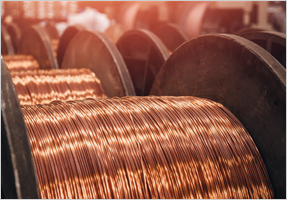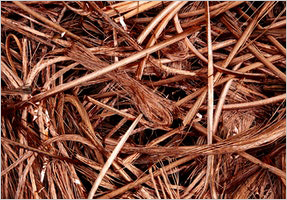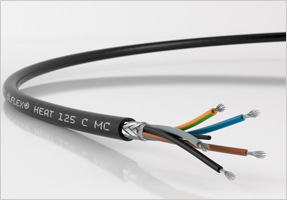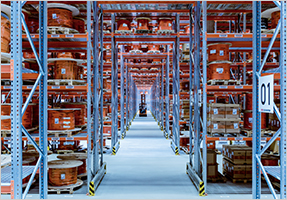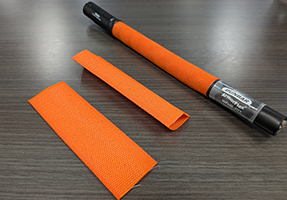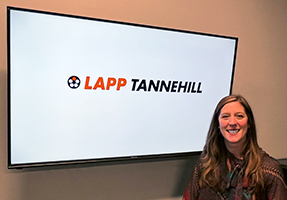How Copper Plays a Role in Future Sustainability
- Kassie Teagarden
- Wire & Cable
- Mar 31, 2022
- 8759views

How Copper Plays a Role in Future Sustainability
Author: Kassie Teagarden, Senior Content Marketing Specialist, LAPP Tannehill
Learn how copper plays a role in future sustainable energy, current demand and price of copper, and how you can save money on copper in the wire and cable industry.
Leading companies world-wide are diligently looking for ways to expand environmental policies to pursue sustainable conservation of natural resources before it’s too late.
Why? If you haven’t noticed, our global footprint has gotten out of control.
According to a recent study published by researchers from the U.S. and Sri Lanka in April of 2021, humans are consuming 73% more resources than the Earth produces every year. This overuse of our natural resources cannot continue for much longer.
The Earth’s carrying capacity is estimated to be at max capacity of 11 billion people. The human population is at approximately 8 billion today, and our population is expected to grow to 9.5 billion by 2050.
So, to follow suit with green initiatives and reducing our carbon footprint as much as we can, we must reduce carbon emissions and our dependency on fossil fuels by leveraging more sustainable materials.
Copper has especially been getting a lot of attention due to its ability to be recycled without any loss of properties. Let’s look at how copper plays a role in future sustainable energy and how wire and cable manufacturers, distributors, and suppliers around the world can take advantage of this material.
How Sustainable is Copper?
Copper is 100% recyclable. Once copper isn’t being used for its original purpose anymore, you can recycle it into its next purpose or upcycle it to be used again.
So, let’s say, for example, copper was originally used for piping in a plumbing system in an older building that is now being demolished. That copper can be removed from the building, melted down in a scrap metal recycling facility, and reshaped into a new product.
Ampco Metal states that recycling copper uses up to 85% less energy than its primary production. Only about 15-40% of the energy needed from ores to melt copper is required for recycling.
If you’ve seen copper turning green at the outer layer, you’re seeing a chemical reaction to oxygen in the air called the patina process. The patina process, which is copper’s natural oxidization, protects copper from deterioration.
It takes anywhere from 25-30 years for copper to turn color, but the color change does not change the metal’s efficacy. If cleaning a copper product is necessary to get the metal back to its original color, you can often do this with lemon, salt, and distilled white vinegar.
What does copper demand look like today?
Although copper has been used by humans for the last 10,000 years, more than 97% of all copper has been mined and extracted since 1900.
According to U.S. Geological Survey (USGS) , around 700 million metric tons of copper has been extracted to date of the total of an estimated 6.3 billion metric tons of copper on Earth. Which means we’ve only used roughly 11% of all copper that we know exists on our planet.
So, if there’s been higher demand for copper, then how much copper are we producing every year? Increased copper demand has caused world production of around 18 million metric tons of copper per year.
The International Copper Association says that 8.5 million metric tons (47%) of the total 18 million metric tons of copper are recycled per year.
That means nearly half of all copper produced every year is recycled copper. Copper demand is accelerating, but we won’t be running out of the red metal any time soon.
According to a peer-reviewed article written in ScienceDirect, there are a few future scenarios of how copper demand may develop, but both scenarios show trends of copper demand stabilizing in 2100 depending on various factors including recycling rates, economic and societal uncertainties, adoption of other renewable energy resources, and population.
Decreasing demand from today’s current demand is estimated to happen somewhere around the end of the 21st century – so we have a long way to go.
Mike McGivern of Montana Resources (a mining company), says, “The copper required in green energy is unbelievable. If we’re going to move away from fossil fuels, you’re going to need unbelievable amounts of copper and there’s just not that much, so it’s in high demand” (Scripps Media, Inc).
What is the price of copper today?
Although the price of copper can fluctuate, it’s been rising at a faster pace than usual the past few years. Copper hit a record high in March of 2022 at $5.02 per pound.
End of March last year the price for copper was around $3.98 per pound whereas this year it’s $4.75 per pound.
The following graph shows a trend in the last 6 months (October 2021 through March 2022) of copper prices dropping at the end of 2021 but is now on the rise again.

Graph indicating upwards tick in copper pricing from October 2021 – March 2022
Check out the interactive COMEX Copper Prices Chart for more historical trends.
Read more about copper prices in, 'Why Are Prices Skyrocketing in Wire and Cable Products?'
Copper in the Wire and Cable Industry
Copper demand in the wire and cable industry include end-users in construction, energy, transportation, electronics, and telecommunication. So, what attracts these end users to this red metal?
Copper does not succumb to corrosion like some other metals, and it does not rust like iron. Along with these traits, its strength and flexibility, its resistance to heat expansion, and its superior electrical conductivity, copper is ideal for use as electrical wire.
Copper wire can consist of either a single solid conductor or multi-stranded conductors usually with insulation whereas copper cable consists of multiple insulated copper wires (shielded or unshielded and single-solid or multi-stranded conductors) assembled within a jacket.
There are many applications in the wire and cable industry that drive copper demand including an increased production of wind turbines, EVs and EV charging stations, and building construction.
Copper in Wind Turbines for Renewable Energy
With copper’s superior electrical conductivity, it’s extremely suitable for its use in wind turbines as renewable energy and contributing to a carbon-free future.
Copper is used in wind turbine generators, power cables and vertical cables throughout the tower system, and the underground cables that reach electricity from the wind turbines to its consumers.
One wind turbine requires about 63,000 pounds of copper but on average can power 3,300 households.
According to Energy.gov, the U.S. Department of Energy released three reports showing that 2020 resulted in a rapid growth in land-based wind energy and a 24% increase in pipeline of offshore wind energy.
The Biden-Harris Administration is adamantly pursuing zero-emission renewable energy deployment to reach the goal of 100% clean electricity in the U.S. by 2035.
Biden is currently trying to pass the Build Back Better Act which would be the nation’s largest investment in tackling climate change, lowering energy costs for consumers, and supporting domestic manufacturing of clean energy such as wind turbines and solar panels.
Copper in Electric Vehicles and EV Charging Cables for Sustainable Energy
A report by the Edison Electric Institute and the Institute for Electric Innovation projects that there will be approximately 18.7 million electric vehicles (EVs) on the road by 2030 and about 9.6 million charging ports are needed in the U.S. to support them (S&P Global Market Intelligence).
Just as new home construction hardwired electrical outlets in houses in the 70’s to 80’s for TV’s, building professionals are now including outlets capable of charging electric vehicles in new home builds.

©Lapp Mobility GmbH (LMD) currently offers cable versions for charging electric vehicles
The International Code Council (ICC), who provides best practices and standards in the construction industry, has a new guideline for EV-charging capabilities in new homes and apartment buildings.
The ICC says, “The proposed code [now adopted] will allow current and future EV-owners to avoid the cost of electrical equipment upgrades, demolition, and permitting for future retrofits.” (Electrek.co).
The new code requires homes to be built with the electrical capacity (240-volt supply) and pre-wiring in their homes for electric vehicles, with the responsibility of the homeowner to buy and install the actual charging equipment.

The actual EV charger doesn’t have much copper in it, but the wires used to connect the charger to the electrical outlet and the charging cable are where most of the copper will be used.
Aside from EV chargers, electric vehicles require a substantial amount of copper. A hybrid vehicle needs about 40 kg (88 pounds) of copper and a fully electric car needs about 80 kg of copper (176 pounds).
Learn more about copper needed for electric vehicles in ‘Relentless Copper Prices Continue to Rise’.
Georg Stawowy, Member of the Board of Innovation and Technology at Lapp Holding AG, says, “Electric vehicles will be an essential part of the energy revolution.”
LAPP has developed tailored charging products for the BMW i3, Hyundai Kona, and a charging system is also currently being built for Jaguar Land Rover.
Less than 1% of the of 250 million cars in the U.S. are electric, but by 2030 electric vehicles are predicted to make up 11% of new car sales.
U.S. President Biden signed an executive order in 2021 calling for half of new car sales to be electric vehicles by the end of this decade.
Although the order isn’t mandatory by automakers, it fuels the conditions necessary for EVs to be adopted by consumers through its other initiatives.
The executive order also includes the development of long-term fuel efficiency and emissions standards to save consumers money, cut pollution, boost public health, advance environmental justice, and tackle climate change.
Copper in Building Construction
According to copper.org, approximately half of the world’s copper supply goes toward building construction with residential homes making up two-thirds of the building construction market.
On average, a single-family home of about 1,200 sq. ft. requires 439 pounds of copper used in heating and plumbing, roofing, and electrical wiring.
Building materials such as plumbing tube, fittings, valves, hardware, appliances, and electrical wire made with copper requires little to no maintenance, is highly recyclable, and overall reduces a building’s energy consumption.
Home construction grew 15.6% in 2021, resulting in over 1.6 million homes while permits to build increased over 17% the previous year. And new home builds are not slowing down anytime soon.
A Forbes article states that more than one-third of U.S. single-family homes for sale are new construction – a 25.4% increase from 2020. This is the highest surge of new construction ever recorded.
How can we reduce our overall use of natural resources?
Although copper can play its part in future sustainability, there are other ways we can reduce the use of natural resources to minimize our footprint on Earth.
The Nature Sustainability researchers recommend the following solutions to find an equilibrium between enhancing resource security and maintaining or slowing down resource demand.
- Planet—enhancing lasting biocapacity through focus on conservation, restoration, and regenerative use. Given the rapid erosion of biodiversity and ecosystem health, protecting the health of the biosphere’s ecosystems is vital.
- Cities—designing and managing for compact and integrated cities with efficient buildings, which also reduces transport needs.
- Energy—phasing out fossil fuels means replacing them with renewables and boosting efficiency. The land required to absorb the greenhouse gas emissions from fossil energy currently makes up the biggest share of humanity’s overall ecological footprint.
- Food—improving production, distribution, and processing. Shifting consumption habits, deemphasizing animal-based products and avoiding food waste offers opportunities. Food demand alone currently occupies roughly 50% of Earth’s biocapacity.
- Population—encouraging smaller families. The number of people sharing the planet determines how much biocapacity is available per person. Enhancing people’s lives often also reduces family size, particularly through securing equal rights and opportunities for women and by making safe and affordable family planning available to all.
(Wackernagel, M., Hanscom, L., Jayasinghe, P. et al. The importance of resource security for poverty eradication. Nat Sustain 4, 731–738 (2021). https://doi.org/10.1038/s41893-021-00708-4)
How to Save Money on Copper Products in the Wire and Cable Industry
LAPP Tannehill is a wire, cable, and connectivity distributor of over 100 million products from over 250+ leading manufacturers. We are a one-stop-shop to many companies with varying applications.
We work closely with all our manufacturers to keep up with the supply and demand of materials and resources in the industry. We can find alternatives that are cost efficient that also meet your quality standards.
Read about LAPP's corporate commitment to a more sustainable future.
If you have questions on copper product info or prices, reach out to us via chat or complete our contact us form.

